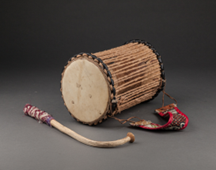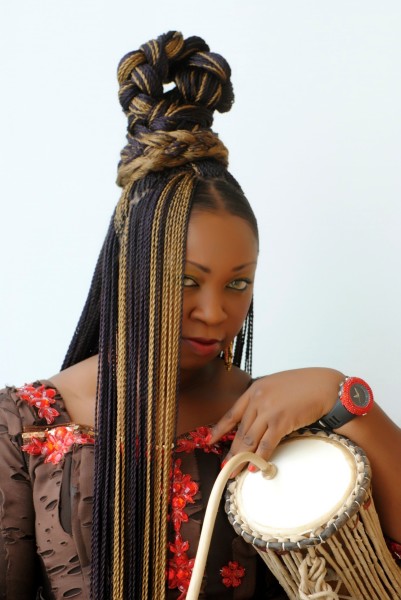Welcome to Week 2 of BHM 2023!
Drums are symbolic representations of African culture, particularly in West Africa.
The Yorùbá drumming tradition is characterised by its unique style that differs from the European approach to drumming (Finnegan, 2012; Iroko). It is considered more than just music, as it is a highly cultured means of communication. This traditional form of drumming plays an important role in conveying messages, emotions, and even history within the Yorùbá community (Iroko 2023: Speaking Without Voice).
The African Talking Drums were developed and used by forested cultures for long-distance communication and religious ceremonies. This hourglass-shaped instrument can be precisely controlled in tone and articulation, but its sound can only be heard in close proximity such as in a gathering or marketplace. It is mainly used during ceremonial occasions, including dance, rituals, storytelling, and communication of important information (Akinbo, 2021; Britannica). In West Africa, especially in Nigeria and Senegal, the talking drums have become a popular instrument in music genres like Jùjú and Mbalax in the 20th century. West African ethnic groups have different variations of the talking drum (Akpabot, 1975; Motta, 2020; demfirecreation).
- Tama (Wolof of Senegal)
- Dondo (Akan of central Ghana and Cote d’Ivoire)
- Doodo (Songhai and Zarma of Mali, Burkina Faso, and Niger)
- Gan gan, Dun Dun (Yoruba of Nigeria and eastern Benin)
- Lunna (Dagomba of northern Ghana; Mossi of Burkina Faso)
- Kalangu (Hausa of northern Nigeria, Niger, northern Ghana, Benin and Cameroon)
The African talking drums are not exclusively played by men, but the extent of gender involvement can vary depending on the specific cultural context and tradition within Africa. In many African societies, both men and women can play talking drums. However, there may be cultural norms or traditions that influence who typically plays them. For example, in some West African cultures, talking drums are often played by male drummers, while women may have different roles in the musical or social context. In other regions, men and women may participate in drumming activities without significant gender-based restrictions.
Source: Bella Naija
Also, the drums themselves can be referred to as male and female drums as a result of the sound they produce. Some scholars believe that a drum’s distinguishing characteristic might be associated with its high or low pitches, but rather with its “bigness” and “littleness” of sound. “Bigness” referred to a loud and forceful timbre, while “littleness” referred to a soft and gentle timbre. Drums that produced a loud, penetrating sound were classified as male, while drums that produced a gentler sound were classified as female (Carrington, 1971).
The African Talking Drums have gained immense popularity and recognition worldwide due to their captivating effect. You will see the African Talking Drums in various musical performances, orchestras, and even in the Award-winning soundtrack of the movie Black Panther. Their unique sound and traditional significance have made them a sensation and a significant part of the global music scene.
Last series was about Black Hair and I hope you have found this week’s #KNOWLEDGESHIFT on Talking Drums intriguing and informative. See you in Week 3


